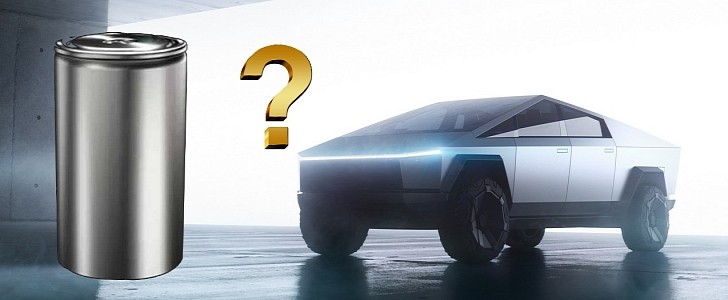Tesla used to say how much the Cybertruck would cost and when it would be produced on its website. In October 2021, it deleted the price references and changed the production schedule for 2022. More recently, it removed “in 2022” from the sentence “as production nears.” Reuters has an answer for that: Tesla will start making it only in 2023.
To be more precise, Reuters’ sources told them that the electric pickup truck manufacturing will only begin by the end of Q1 2023. In other words, by the end of March. As we are talking just about production, deliveries should only happen about two months after that. The excuse is that Tesla is changing features and functions to make it more competitive. Tell us another…
The main issue with manufacturing the Cybertruck is that it was conceived to work with 4680 cells. These batteries were announced at Tesla Battery Day on September 22, 2020, as if they were only months away from production. All new products from Tesla were based around a structural battery pack that would use them. Yet, they are still not ready.
The Cybertruck adds more difficulties to that by trying to be a revolutionary vehicle: it will use a stressed-skin body with steel that is just too hard to bend on conventional stamping machines. From a massive technical challenge, that must have converted into a nightmare for the engineering team at Tesla, as the clumsy prototype with a massive windshield wiper demonstrates. Remember that the Cybertruck will also use gargantuan cast parts in its structure.
In the best-case scenario, Elon Musk admitted 4680 cells would only be ready by April 2022. In the worst, that would happen by October 2022. Reuters’ report about when the Cybertruck will finally hit the assembly lines suggests the 4680 cells must have been postponed beyond October 2022.
That means Giga Austin and Giga Grünheide will have to adopt conventional battery packs or a structural one based on the current 2170 cells, as we said back in October 2021. The latter is more likely because these factories were designed to produce cars based on three massive castings: one for the front structure, one for the rear, and one in the middle composed of a structural battery pack. With or without 4680 cells, such a battery pack is literally a central piece of this puzzle.
If what Reuters heard from its sources is true – and it usually is – that is strong evidence that Tesla is completely lost when it relates to planning and testing. The company could have never based all its new products around a cell that was not yet ready for production. It could never have built factories that would count on having them ready when they’re not. That’s basic.
This situation could have a more significant impact on Tesla’s financial health than production hell for the Model 3. It probably already does, but we’ll only confirm that after Musk makes another “bankwupt” joke and admits it was not really a joke but an actual threat years later. It would be nothing new.
The main issue with manufacturing the Cybertruck is that it was conceived to work with 4680 cells. These batteries were announced at Tesla Battery Day on September 22, 2020, as if they were only months away from production. All new products from Tesla were based around a structural battery pack that would use them. Yet, they are still not ready.
The Cybertruck adds more difficulties to that by trying to be a revolutionary vehicle: it will use a stressed-skin body with steel that is just too hard to bend on conventional stamping machines. From a massive technical challenge, that must have converted into a nightmare for the engineering team at Tesla, as the clumsy prototype with a massive windshield wiper demonstrates. Remember that the Cybertruck will also use gargantuan cast parts in its structure.
In the best-case scenario, Elon Musk admitted 4680 cells would only be ready by April 2022. In the worst, that would happen by October 2022. Reuters’ report about when the Cybertruck will finally hit the assembly lines suggests the 4680 cells must have been postponed beyond October 2022.
That means Giga Austin and Giga Grünheide will have to adopt conventional battery packs or a structural one based on the current 2170 cells, as we said back in October 2021. The latter is more likely because these factories were designed to produce cars based on three massive castings: one for the front structure, one for the rear, and one in the middle composed of a structural battery pack. With or without 4680 cells, such a battery pack is literally a central piece of this puzzle.
If what Reuters heard from its sources is true – and it usually is – that is strong evidence that Tesla is completely lost when it relates to planning and testing. The company could have never based all its new products around a cell that was not yet ready for production. It could never have built factories that would count on having them ready when they’re not. That’s basic.
This situation could have a more significant impact on Tesla’s financial health than production hell for the Model 3. It probably already does, but we’ll only confirm that after Musk makes another “bankwupt” joke and admits it was not really a joke but an actual threat years later. It would be nothing new.



































